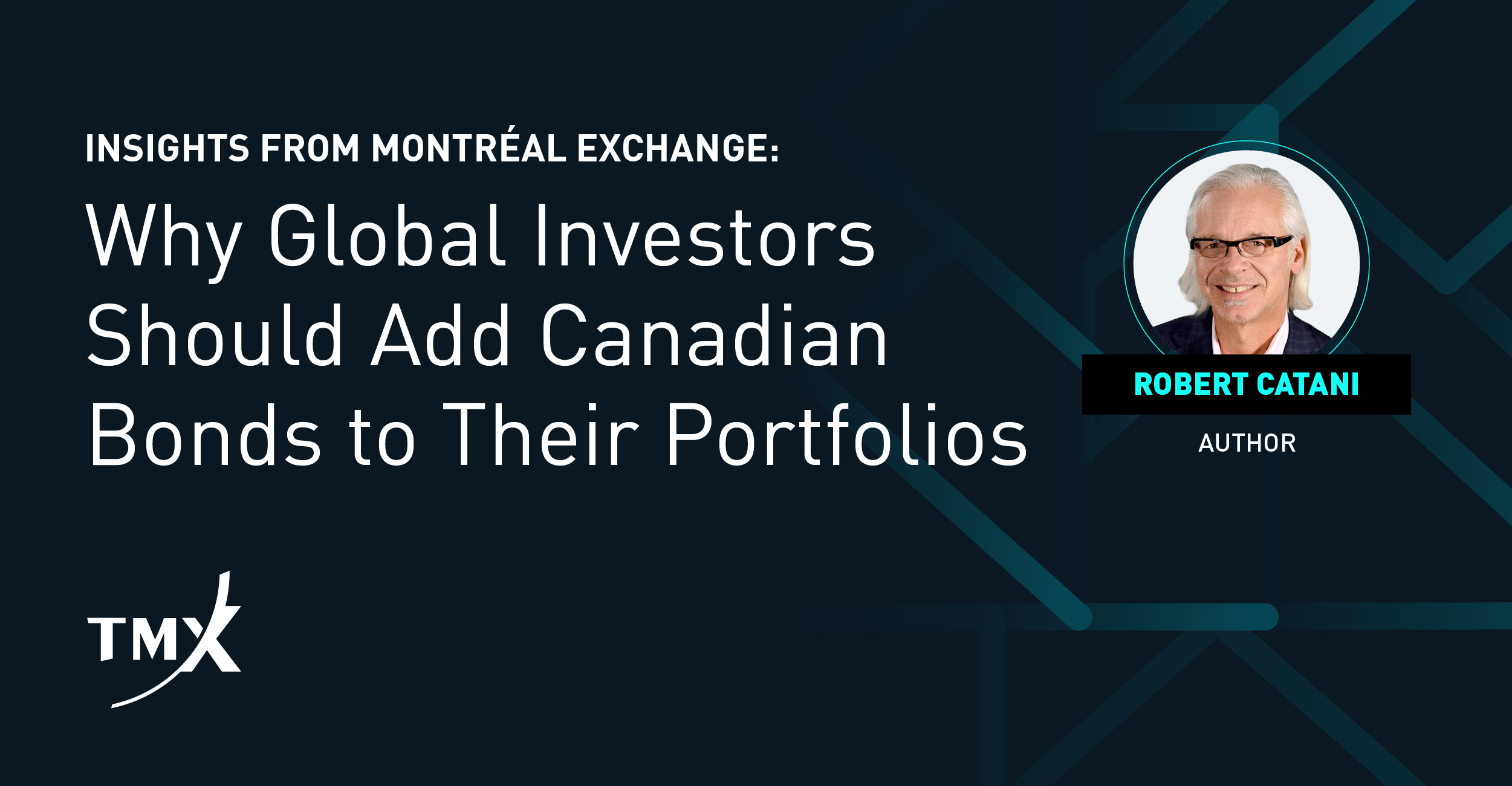Why Global Investors Should Add Canadian Bonds to Their Portfolios

For fixed income investors, global bonds play an important role in portfolio diversification, reducing risk and enhancing return potential. As fiscal and monetary policies continue to shift around the world, it is worth considering which sovereign bonds can help investors meet their long-term investment goals.
Making a Business Case for Canadian Bonds
Since the first Government of Canada (GoC) bond was issued in the 1940s to the present day, Canadian bonds and bond futures contracts have become a staple in fixed income portfolios. Canada is well known globally as a sophisticated and mature marketplace with ease of access and long-standing regulatory frameworks that allow for a vibrant and accessible market.
Canada also offers diversification from the United States and opportunities for relative value trading across major markets. Government of Canada bond futures contracts can be readily traded through Montréal Exchange (MX), which is the primary marketplace for Canadian-listed derivatives and offers a variety of interest rate and index derivatives.
MX extended its trading hours in 2018 to facilitate access for investors in Europe. In the latter half of 2021 the Exchange will be open for trading more than 20 hours per day, allowing investors based in Asia Pacific to trade Canadian listed derivatives in their local time as well as execute cross-market strategies.
Balancing Growth with Low Rates
For domestic and international investors, the variety of products that are traded on Montréal Exchange — from the 3-Month Canadian Bankers' Acceptance Futures (BAX) to the 10-Year Government of Canada Bond Futures (CGB) — offer opportunities to balance income generation and help insure portfolios against moves in rates. The latter has become especially relevant in the type of low-interest environment that has prevailed for the last 10-plus years.
According to an analysis by the Bank of Canada, demand among international investors for Government of Canada bonds has increased rapidly since the financial crisis of 2008-2009. This was largely due to external factors, such as quantitative easing (QE) measures in the United States and the euro crisis that started in 2010.
The resulting low or negative yields have made Canadian bonds an attractive investment option for international investors. For example, in May 2021 Canada's 10-year benchmark government bond yielded about 1.51% compared to -0.16% for German debt of similar duration and 0.07% for Japanese bonds, according to data from Bloomberg.
Supporting Interest from Investors in Asia
Statistics Canada has reported that foreign investors acquired C$127.1 billion of Canadian securities in 2020; of this, approximately C$98 billion was in government debt. Further analysis of this data by National Bank of Canada has shown that the demand was highest from Japanese investors, representing C$28 billion in acquisitions in the 12 months preceding January 2021.
While Japanese investors have been buying and selling Canadian bonds for more than 30 years, it is only in the last 12 months that the transactions have increased substantially, for both federal and provincial bonds. The reasons for this could include lower currency exchange hedging costs, as well as the comparatively higher yields offered by Canadian bonds.
By making the Montréal Exchange more accessible, we will help trading desks in Asia Pacific hedge existing exposure to Canadian fixed-income products and execute relative value trades for clients against other yield curves. This will also sustain the interest of international investors in Canadian bond futures and other derivative products.
Navigating the Canadian Yield Curve
While bond yields globally are expected to remain low as economies recover from the pandemic, investors can utilize a number of strategies to limit their exposure and seek some insurance against unexpected rate movements. In this respect, Montréal Exchange offers a variety of interest rate derivatives that encompass the yield curve, from the 3-month CORRA Futures (CRA) and BAX, to the 2-Year (CGZ), 5-Year (CGF), 10-Year (CGB) and, soon, the 30-Year (LGB) Government of Canada bond futures contracts.
International investors can easily navigate monetary and fiscal policy in a low interest rate environment by taking advantage of the liquidity offered along this Canadian yield curve.
For more information, sign up to receive the latest news and updates or contact us.
About the author:
Robert Catani
Robert Catani joined TMX Group in 2018 and currently serves as its Head of Institutional Fixed Income and Derivatives Sales and Trading. Robert has more than 30 years of experience in Canadian financial markets. Before he joined TMX, he was a Managing Director at National Bank of Canada and TD Securities, where he traded Canadian and US dollar fixed income products out of both Toronto and New York, and led business development for fixed income and derivative sales to institutional accounts. Robert earned a Bachelor of Arts from the University of Toronto.Follow Robert on LinkedIn
Copyright © 2021 Bourse de Montréal Inc. All rights reserved. Do not copy, distribute, sell or modify this document without Bourse de Montréal Inc.'s prior written consent. This article is provided for information purposes only. Neither TMX Group Limited nor any of its affiliated companies guarantees the completeness of the information contained in this article, and we are not responsible for any errors or omissions in or your use of, or reliance on, the information. This article is not intended to provide legal, accounting, tax, investment, financial or other advice and should not be relied upon for such advice. The information provided is not an invitation to purchase securities listed on Montréal Exchange, Toronto Stock Exchange and/or TSX Venture Exchange. TMX Group and its affiliated companies do not endorse or recommend any securities referenced in this publication. BAX, CRA, CGB, CGF, CGZ, LGB, Montréal Exchange and MX are the trademarks of Bourse de Montréal Inc. TMX, the TMX design, The Future is Yours to See., and Voir le futur. Réaliser l'avenir. are the trademarks of TSX Inc. and are used under license.





